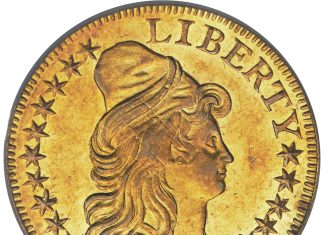United States coin composition is the subject of a new report submitted by the U.S. Mint to Congress. While the report covers many aspects, it concludes the need for more research and development before recommending possible changes to compositions of circulating coinage.
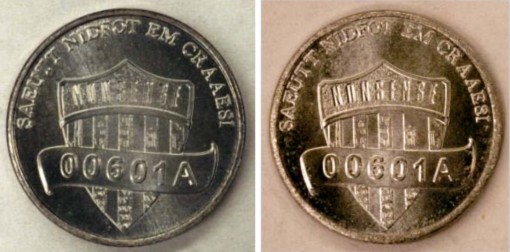
The report is part of a legal requirement established under the Coin Modernization, Oversight, and Continuity Act of 2010 (Public Law 111-302). Additional terms of that same act authorize research and development (R&D) on alternative materials for circulating coins.

Cost savings for the United States Mint, and thus the taxpayer, is the overall intent. In addition to seeking possible alternative coin compositions, production efficiency was also studied.
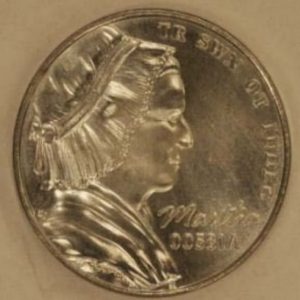
As an example of current production costs for American circulating coins, the U.S. Mint indicates it spends 2.00 cents to make and distribute every Lincoln cent and 10.09 cents to strike and distribute every Jefferson nickel. A table of current U.S. Mint costs by circulating coin follows.
Unit Cost of Producing and Distributing US Circulating Coins in 2012
| Cent | Nickel | Dime | Quarter | $1 | |
|---|---|---|---|---|---|
| Metal | $0.0093 | $0.0611 | $0.0279 | $0.0674 | $0.1275 |
| Mint Production | $0.0070 | $0.0218 | $0.0136 | $0.0269 | $0.0527 |
| General & Administrative | $0.0034 | $0.0173 | $0.0080 | $0.0171 | $0.0288 |
| Distribution to FRB | $0.0003 | $0.0007 | $0.0004 | $0.0016 | $0.0021 |
| Total Unit Cost | $0.0200 | $0.1009 | $0.0499 | $0.1130 | $0.2111 |
To carry out the requested requirements in the Act, the U.S. Mint hired a third party consultant, Concurrent Technologies Corporation (CTC). The U.S. Mint describes CTC as "an independent, nonprofit, applied scientific R&D professional services organization." The U.S. Mint and CTC each submitted a report to Congress.
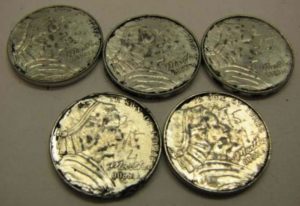
US Mint Recommendations
A dedicated R&D laboratory was constructed at the U.S. Mint facility in Philadelphia.
"Of the 80 metals on the period table of the elements, only aluminum, iron (used to manufacture steel), zinc, and lead costs less than the metals currently used in circulating coins," the U.S. Mint stated in its report to Congress.
"For this reason, CTC and the Mint focused the alternative metals research on commercially available formulations of alloys and plated metals that use aluminum, steel, zinc, copper and nickel."
The lab produced hundreds of test strikes composed of 29 different formulations to determine their attributes such as coin color, wear, life span and conversion costs to the private sector.
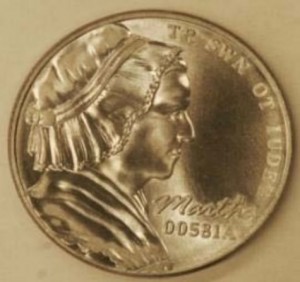
The U.S. Mint’s report to Congress about alternative coin compositions is basically summarized in the following statement:
"After a nearly two-year R&D effort that was significant, meaningful and thorough, the Mint found that additional R&D is required before it can make detailed recommendations for any appropriate changes in coin composition or methods of production," stated Tom Jurkowsky, U.S. Mint Director of Public Affairs.
"Accordingly, the second round will allow the Mint to (1) conduct production-scale tests with multiple lots of proposed coin materials to verify the potential supply chains and the results from the preliminary tests described in the CTC study and (2) conduct further research regarding estimated costs to stakeholders associated with a change in the electro-magnetic signature of circulating coins."
The United States Mint last conducted significant research into alternative coin compositions in 1965.
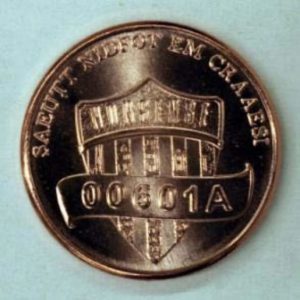
Public Law 111-302, the Coin Modernization, Oversight, and Continuity Act of 2010, requires biennially submitted reports to congress on current coin production costs and alternative metals usage. As such, it may be another two years before any additional information is released with potential coin composition changes seemingly many years down the road.
CTC Recommendation
Included within CTC’s report to Congress are the following specific recommendations about coin compositions for the cent, nickel, dime, quarter and dollar:
-
Maintain existing coin dimensions (i.e., thickness and diameter) for all future coins regardless of their materials of construction. The conversion costs to coin-processing equipment are too large to justify changes to coin dimensions.
-
Maintain the incumbent materials of construction for the cent. When metal and production costs are accounted for, copper-plated steel cents (which would have the look and feel of incumbent cents) offer no cost savings from incumbent copper-plated zinc cents. Other potentially low-cost metal alloys lacked the ability to meet one or more provisions of the Coin Modernization, Oversight, and Continuity Act of 2010: aluminum alloys jam or destroy some types of coin-acceptance or coin-handling equipment, which would require costly upgrades to enable this equipment to process aluminum-based coins; the surface-modifying technologies (to reduce tarnish and/or corrosion of single-alloy coins) evaluated in this study lacked application maturity; other alternatives did not offer sufficient corrosion and/or wear resistance. Copper-plated zinc remains the most viable material option for the cent.
-
Further develop the copper-based alloys, unplated 31157, G6 and 669z, as future 5-cent coin materials of construction. Although, it was not shown that these alloys would bring the costs to parity, these alloys would produce material cost savings and decrease the furnace annealing temperature resulting in decreased energy costs and prolonging furnace life. The G6 and 669z have a yellow cast color while the unplated 31157 has a golden hue color. From the Outreach surveys, it is CTC’s opinion that the general public would readily accept the 5-cent coin color change. Reductions in the number of individuals suffering from nickel allergies would also provide a cost benefit. However, each of these alloys is less dense than the incumbent 5-cent coin material, which would result in reduced coin weight if the 5-cent coin remained of the same size as the incumbent 5-cent coin. Weight-based coin-acceptance equipment, which comprises far less than 5 percent (%) of the total number of fielded units in the United States, would require one-time conversion costs to the coin-acceptance equipment of approximately $11.3 million (M) for an unplated 31157. Other candidate alloys G6 mod and 669z alloys as tested in the current study, however, would require $56.4M to convert existing coin-processing equipment resident in the US. These materials offer annual cost savings to the United States Mint of up to $16.7M, using March 2012 metal pricing and 2011 production rates of 5-cent coins from the United States Mint. Also note that bulk coin handlers would be impacted by change to the weight of 5-cent coins since additional coin handling would be required to separate incumbent coins from those made of alternative materials of construction. The annual costs for handling 5-cent coins of a different weight than the incumbent 5-cent coins were estimated to be $3.75M.
-
Consider copper-based alloy, 669z clad to C110 copper alloy for use in dime, quarter dollar and half dollar coins. Based upon validation testing completed in this study, quarter dollar nonsense test pieces of this construction showed evidence of being a seamless alternative to the incumbent quarter dollar coin. Potential reduced expenses to the United States Mint for dime and quarter dollar coins of 669z-clad C110 were estimated to be approximately $2.2M annually, using March 2012 metal pricing and 2011 production rates of quarter dollar coins. In addition, the annual potential reduced expenses to the United States Mint for dime coins was estimated to be $3.9M; however, these savings need to be validated in future efforts since 669z clad C110 copper dime nonsense pieces were not tested in this study. Also note that bulk coin handlers would be impacted by change to the weight of quarter-dollar coins since additional coin handling would be required to separate incumbent coins from those made of alternative materials of construction. The annual costs for handling quarter-dollar coins of a different weight than the incumbent quarter-dollar coins was estimated to be $9.20M; similar costs for the dime coins are $6.92M and for the half dollar the value was estimated to be $0.04M. It should be noted that 669z-clad C110 has a slight yellow cast and may cause confusion with the golden dollar coin, although it is CTC’s opinion that the dollar coin is not widely used in transactions.
-
Maintain current dollar coin alloy composition. None of the dollar coin alternative material candidates improved upon the incumbent materials’ steam corrosion characteristics and did not show any improvement in cost. As it was deemed that revising the incumbent dollar coin material would have minimal impact to overall United States Mint costs, the dollar coin received a lower priority than the other denominations. Alternative material candidates for the dollar coin were tested for steam corrosion only.
-
Continue long-range research on surface engineering of zinc or low-carbon steel for the cent may be a useful technology to obviate the copper plating and its associated costs. For example, inexpensive paints or colored particles on bare zinc covered with a wear resistant coating could considerably reduce costs to produce cents.
-
Continue research and development (R&D) efforts on stainless steels as a potential alternative material for lower-denomination coins. Also development of stainless steel alloys clad to C110 alloy for higher denomination coinage to be able to mimic the current electromagnetic signature (EMS) of the incumbent dime, quarter dollar and half dollar coins to avoid the need for upgrading coin-processing equipment, increase cost effectiveness and have the same appearance of the incumbent coins.
The CTC and U.S. Mint reports provided to Congress are found here:
http://www.usmint.gov/about_the_mint/?action=biennialreport.

